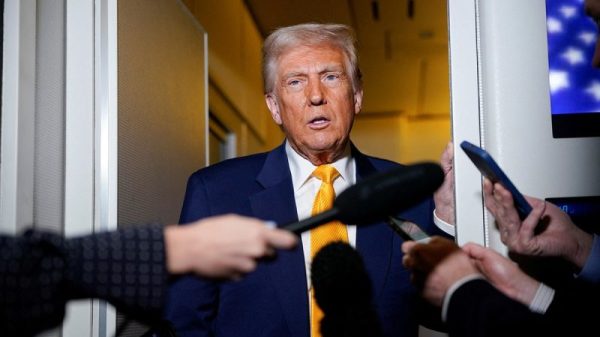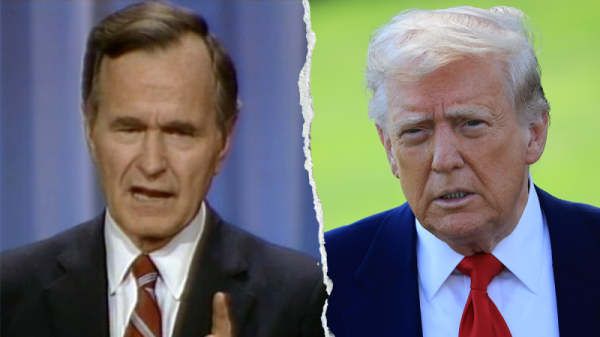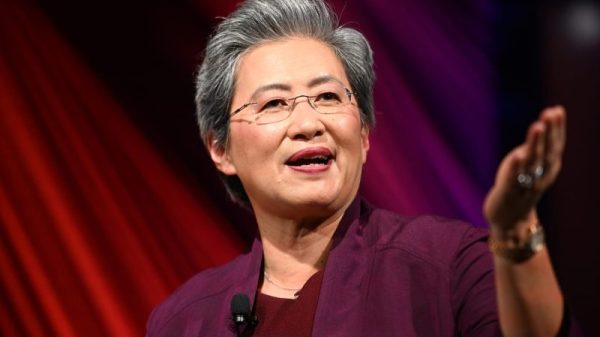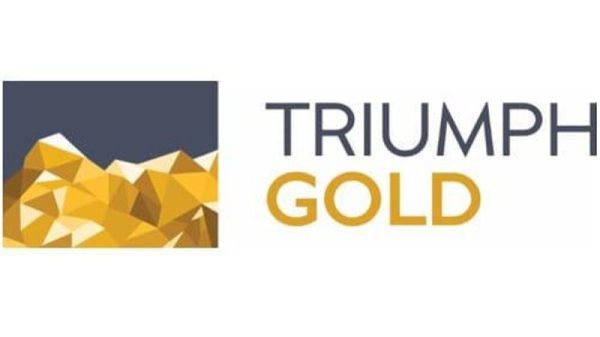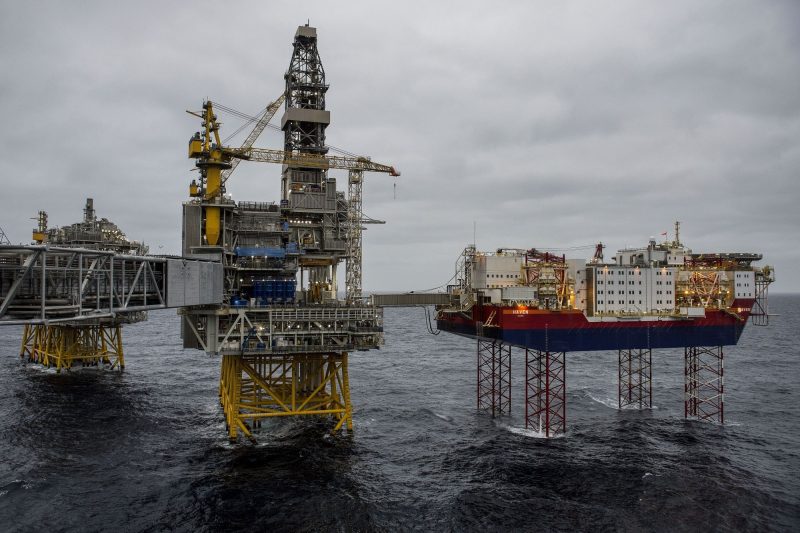The Trump campaign and the Biden administration do not often agree, but they do appear to have at least one new area of overlap: Both say they are at work on proposals for a U.S. sovereign wealth fund, an investment fund owned and operated by the government.
It would not be an obvious policy choice. Around the world, such funds are often associated with autocracy and corruption — and with countries that have surplus to invest rather than mammoth debt. But Norway’s fund, the world’s largest and seen as an economic miracle, shows why the idea has drawn attention and envy from both sides of the aisle.
Norway’s oil fund — worth $1.79 trillion, and holding an average of 1.5 percent of shares in the world’s listed companies — gives the small Scandinavian country of some 5.5 million people oversized financial power, a flow of limited budget infusions, and a source of wealth likely to outlast even the richest petroleum deposits, with few apparent downsides.
“Why don’t we have a wealth fund? Other countries have wealth funds. We have nothing,” former president Donald Trump, the Republican candidate, said last month in New York City. The United States would have “the greatest sovereign wealth fund of them all,” he later promised — even larger than Norway’s, one of his economics advisers said.
Officials in the Biden White House, led by national security adviser Jake Sullivan and his deputy Daleep Singh, were already working on a plan of their own, the administration soon told reporters without claiming such grand ambitions. (Vice President Kamala Harris’s presidential campaign did not response to a request for comment on the proposals.)
But many Norwegians are skeptical. The U.S. proposals are “not related to what we have done in Norway,” said Knut Kjaer, first manager of Norway’s oil fund, who ran it from 1997 to 2008.
The view from Norway
Around the world, sovereign wealth funds do not represent a universal success story. Malaysia’s 1MDB sovereign wealth fund was at the core of a sprawling global embezzlement scandal, which the Justice Department dubbed the “largest kleptocracy case to date.”
And they require spare cash to invest. The United States has a largely private energy sector and yawning debt. It effectively has no spare cash, meaning it would need to borrow to put money in a fund or raise it some other way.
But in a moment of resurgent interest across the political spectrum in industrial policy and the use of government to bolster key sectors, the idea of a state-controlled investment fund has found renewed appeal.
The discovery of oil in the North Sea in the late 1960s turned Norway’s shoreline, once home to a declining fishing industry, into a booming energy hub.
The oil and gas under the North Sea were on land owned by the Norwegian state, which also owned large portions of the companies that extracted and exported it. Soon, Norway faced a new question: What to do with all the profits?
“Norway ran a substantial current account surplus for many years,” said Ole Bjorn Roste, a politics professor at the Norwegian University of Science and Technology. After considerable debate, Norwegian lawmakers signed a law in 1990 to establish a fund with the excess profits.
The fund’s value was roughly 18,521,686,235 kroner in 1996 — close to $2 billion at the time. Through continued input of oil profits and investment proceeds, it passed $1 trillion in 2019. “The main problem is that it has grown too big,” said Tore Eriksen, a Norwegian economist who helped set guidelines for the fund.
It did not just grow, but evolved. Initially focused on bonds, it expanded into stocks. The Norges Bank Investment Management was established under Norway’s central bank to manage the fund. The aim was to build wealth for future generations and buttress the economy against oil price fluctuations.
The fund follows several key rules: All investment are made outside of Norway, and the government can only spend a small fraction of it at a time, to avoid warping the domestic economy.
Trond Grande, the current deputy chief executive overseeing the fund, said that its governance structure and transparency helped it become a success. It has a clear, simple aim, he said: “To have the highest possible long-term return.”
Generally, this has worked. The fund saw a real return of 4 percent between 1998 and 2024.
Its degree of ownership over companies means it wields shareholder influence. Earlier this summer it made headlines by voting against a pay package for Elon Musk at Tesla valued at over $50 billion. While the fund didn’t win on that issue, it represented a kind of power within corporations that the U.S. government doesn’t have.
“We don’t want to be a passive investor, nor do we want to be an activist investor, but we want to be an active investor,” said Grande, adding that the fund had a set of expectation documents that guide it to push for climate action and labor rights.
Leading progressive supporters of a U.S. fund often point toward the success of Norway’s model, which pours state owned resource wealth into the collective ownership of shares in companies, to help fund generous spending on social welfare.
“I think that Norway fund is the best version of this, in the world, that exists,” said Matt Bruenig, founder of the People’s Policy Project, a left-leaning think tank.
Could the United States follow suit?
From what little the Trump and Biden teams have sketched, their ideas might look similar to Norway’s on the surface.
Hedge fund billionaire John Paulson, who said he’s advising Trump on a fund, told Bloomberg Television that a U.S. wealth fund would follow a model similar to Norway’s.
It would be “over time, larger than other existing funds,” he said.
But some Norwegian economists barely find the sketches of U.S. versions recognizable.
Both sides in the United States have indicated they would used a fund, which would require congressional approval, to make strategic investments at home, whereas Norway simply makes global investments that meet its ethics guidelines, in interest of maximizing return.
In statements shared with reporters, White House staffers, speaking on the condition of anonymity because they were not authorize to share specifics, have pointed to “supply chain resilience, technological preeminence and energy security” as examples of target areas for a U.S. fund, while Trump said its aim would be “to invest in great national endeavors” including transportation infrastructure, defense technology and medical research.
.
Beyond the differences in investment philosophy, Norwegian economists are skeptical of the idea that a country in large debt should follow Norway’s path. Norwegian law forbids the use debt for its fund.
You don’t have to have a budget surplus to run a wealth fund: Heavily indebted Britain recently announced plans for National Wealth Fund, though its funding is relatively modest at $9.4 billion. However, borrowing money comes with costs that could undermine the benefits of a profit-seeking fund.
In the United States, where relatively few energy resources are federally owned, a Norway-style oil fund is hard to imagine. Some government-run funds operate at the state level: Alaska’s Permanent Fund uses the state’s oil revenue to provide an annual payment to residents, for example.
Trump has suggested that a U.S. fund could be started with revenue from the tariffs he plans to impose, along with “other intelligent things.” That idea has met a mixed, at best, reception from economists, who point out that consumers would face higher prices from tariffs.
Meanwhile, the Biden administration has not offered details of how it would hope to fund its own proposal.
Eriksen warned that while targeted investments may sound like a good idea, they could be politically risky. “If you lose money, it may be politically very difficult to tell people that,” he said.
While Democrats and Republicans have both expressed support for a fund, they would likely disagree about how it should invest.
Even in Norway, it is a misconception that the oil fund is above politics, said Camilla Bakken Ovald, a researcher at Kristiania University College. Lawmakers have considerable power over how much of the fund should be spent, even if they don’t use it.
“In reality, the fund is inherently political,” she said.
Jeffrey Stein contributed to this report.



